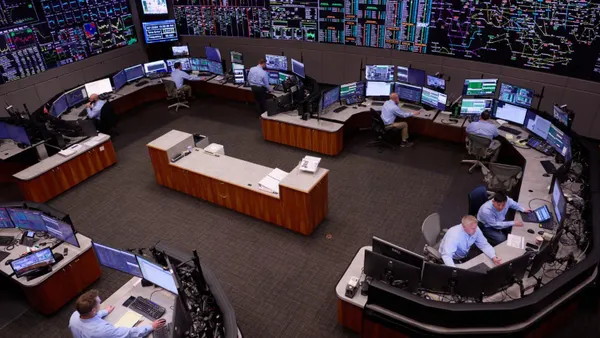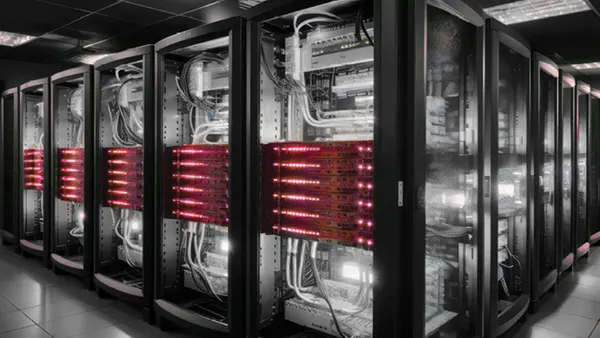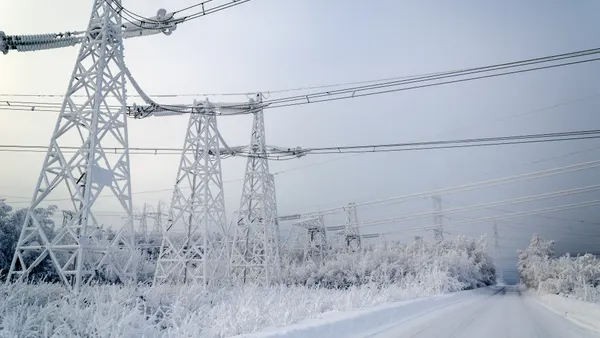How Engineered Building Solutions Support Data Center Technologies to Deliver AI Workloads
As demand for AI applications accelerates, deploying AI workloads at scale is a challenge many of the world’s most important industries are collaborating to solve. Data centers, power producers and infrastructure providers must all work together to figure out how to generate and distribute enough power to keep next-generation IT equipment powered and cooled.
When data centers are looking to deploy more AI-ready chips, infrastructure enhancements are a must. These chips have incredibly high-power demands, and data centers need to make sure they are ready to deliver power to racks safely and reliably. The standard for uptime in many data centers exceeds 99%, meaning power availability is paramount. Working with such a high level of power, data center designers are taking lessons from the utility industry to manage it. This includes the strategic deployment of engineered building solutions.
A Flexible Solution
Engineered control buildings are large, modular enclosures that house critical electrical equipment. Traditionally used in the utility sector for transmission, distribution and renewable energy applications, these structures are essential for data centers facing unprecedented power demands driven by AI workloads. These buildings often include switchgear, relay and protection and control equipment that maintain uptime and accelerate deployment. The opportunities to use engineered building solutions address both gray and white space needs.
Gray space applications include modular outdoor enclosures that provide primary power with switchgear or back-up power, such as uninterruptible power supply (UPS) and battery systems. These buildings can also feature integrated cooling to ensure system reliability and optimal performance.
Within the white space, IT Pod solutions are prefabricated and shipped to site for installation inside a data center hall. They feature seamless integration of power and cooling and include IT equipment such as racks, making them ideal for scalable, high-density AI deployments.
Modular data centers provide a distinct advantage over traditional construction methods by enabling rapid deployment and minimizing on-site complexities. As fully integrated systems, these units are pre-engineered and pre-wired in controlled environments, ensuring quality control and consistency. One of the key advantages of modular data centers is scalability. Units are engineered for expansion, allowing multiple modules to be connected seamlessly, supporting future growth without disruption to existing operations. Additionally, these systems can be rated for either occupied or unoccupied use, potentially streamlining permitting processes.
Key Application Considerations
Grid Capacity
To support higher rack density and power loads, infrastructure upgrades are required. Engineered building solutions connect and protect the equipment used to power data centers, speed up the construction process and allow flexible future expansion. Renewable energy and nuclear power provide solutions to current power constraints. Some data centers are adopting behind-the-meter configurations to bypass grid congestion, accelerating speed-to-market. Backup power is critical for data centers because the industry demands 24/7 uptime, regardless of disruptions or fluctuations in the local grid.
Environmental Durability
Enclosures must be built to withstand the elements for its specific site location including snow, wind and seismic loads. Both wind and seismic have lateral load components that are resisted by the building's lateral load resisting system. The methods of resisting these lateral loads are very specific to the configuration of the building (width, length, height, wall openings) and the severity of the loads. In some cases, the exterior panels are sufficient for resisting the lateral loads. Under more severe cases, strap bracing, a shear wall or moment frame is necessary to resist the loads.
Thermal Management
Thermal management is a key consideration for engineered building solutions. With all the expansion in AI, many new IT and chip technologies are being designed with liquid cooling in mind. Higher rack density drives data centers to improve airflow and adopt liquid cooling technology. Liquid cooling can bring a potential improvement in power usage effectiveness of up to 45% compared to air cooling. In fact, engineered liquid cooling systems can actually use less water than air cooling.
Engineered Buildings Solutions Expertly Designed for Scalability
As AI workloads increase, the ability to scale data center infrastructure efficiently and reliably has become critical. Engineered building solutions ranging from modular outdoor enclosures to fully integrated IT Pods offer a flexible, scalable approach to meeting the power and cooling demands of next-generation workloads. By deploying the newest grid technologies and modular construction methods, data centers can reduce deployment timelines and maintain the industry’s uptime standards. These innovations address today’s challenges and position operators for future growth.










